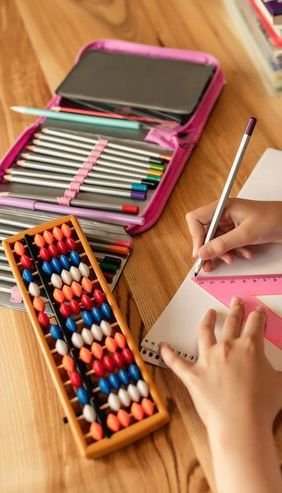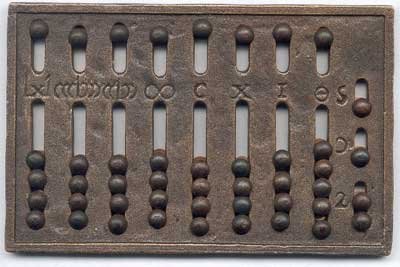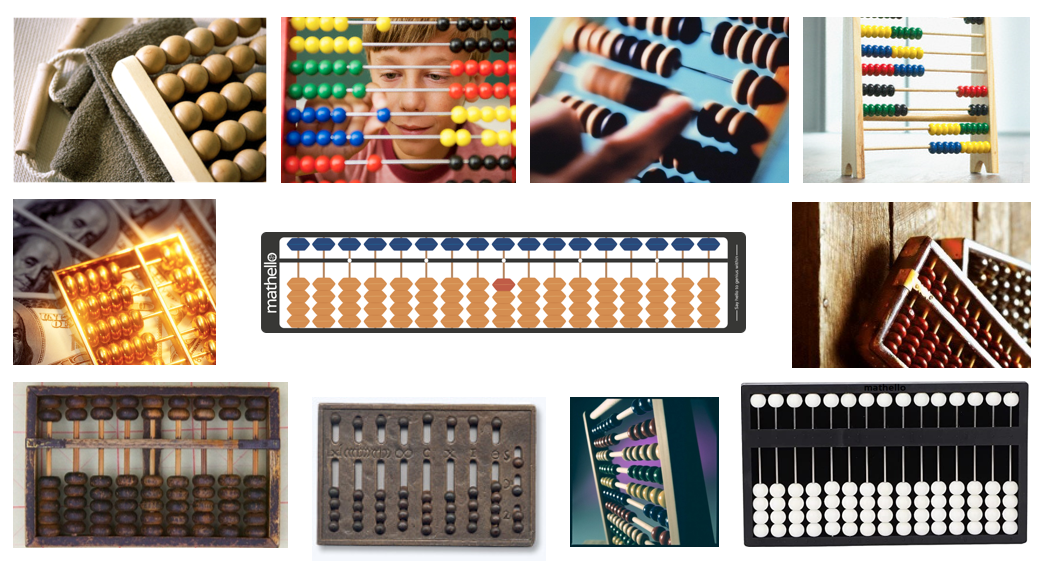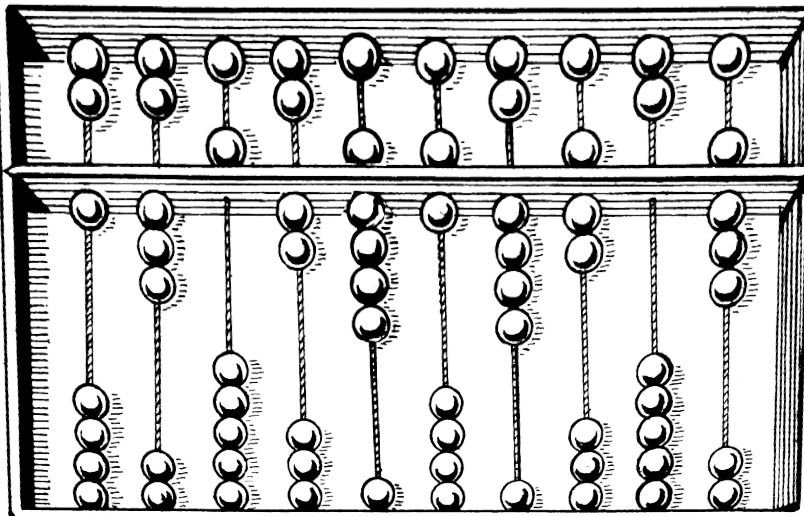

ABACUS
A - Abundant
B - Beads
A - Addition
C - Calculation
U - Utility
S - System
Abacus, on the other hand, referred as the tallying frame, a maths device is a mechanical gadget used to help human in performing numerical computations and checking.
The word abacus is Latin. It is taken from the Greek word abax, which means "flat surface." The predecessors to the abacus-counting boards-were just that: flat surfaces. Often they were simply boards or tables on which pebbles or stones could be moved to show addition or subtraction. The earliest counting tables or boards may simply have been lines drawn in the sand. These evolved into actual tables with grooves in them to move the counters.

There is evidence that people were using abacuses in ancient Rome (753 B.E.C. - 476 C.E.). A few hand abacuses from this time have been found. They are very small, fitting in the palm of your hand. They have slots with beads in them that can be moved back and forth in the slots similar to counters on a counting board. Since such a small number of these have been found, they probably were not widely used. However, they resemble the Chinese and Japanese abacuses, suggesting that the use of the abacus spread from Greece and Rome to China, and then to Japan and Russia.



A tally stick was an ancient memory aid device to record and document numbers, quantities, or even messages. individual in performing mathematical calculations.
The abacus in the form we are most familiar with was first used in China in around 500 B.C

Our champion team mate will contact you soon